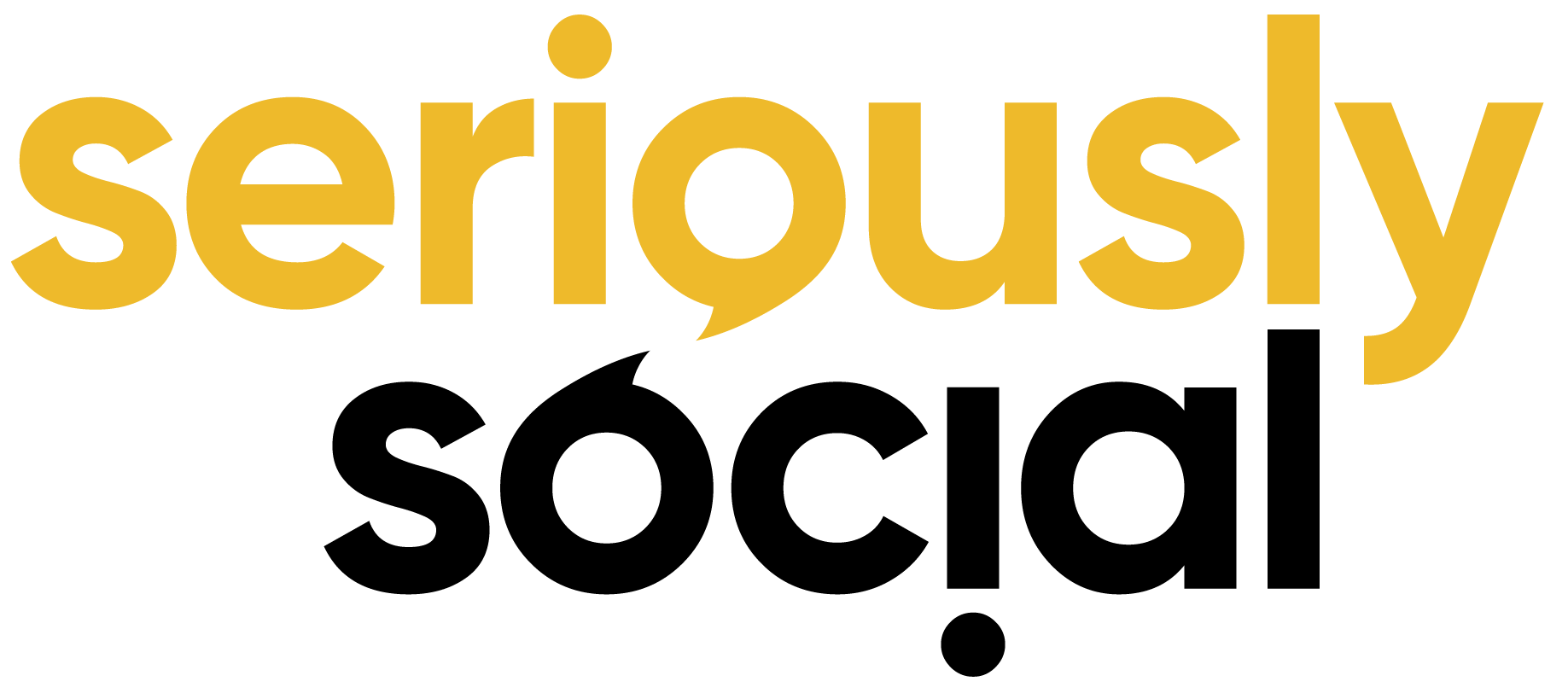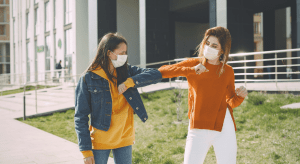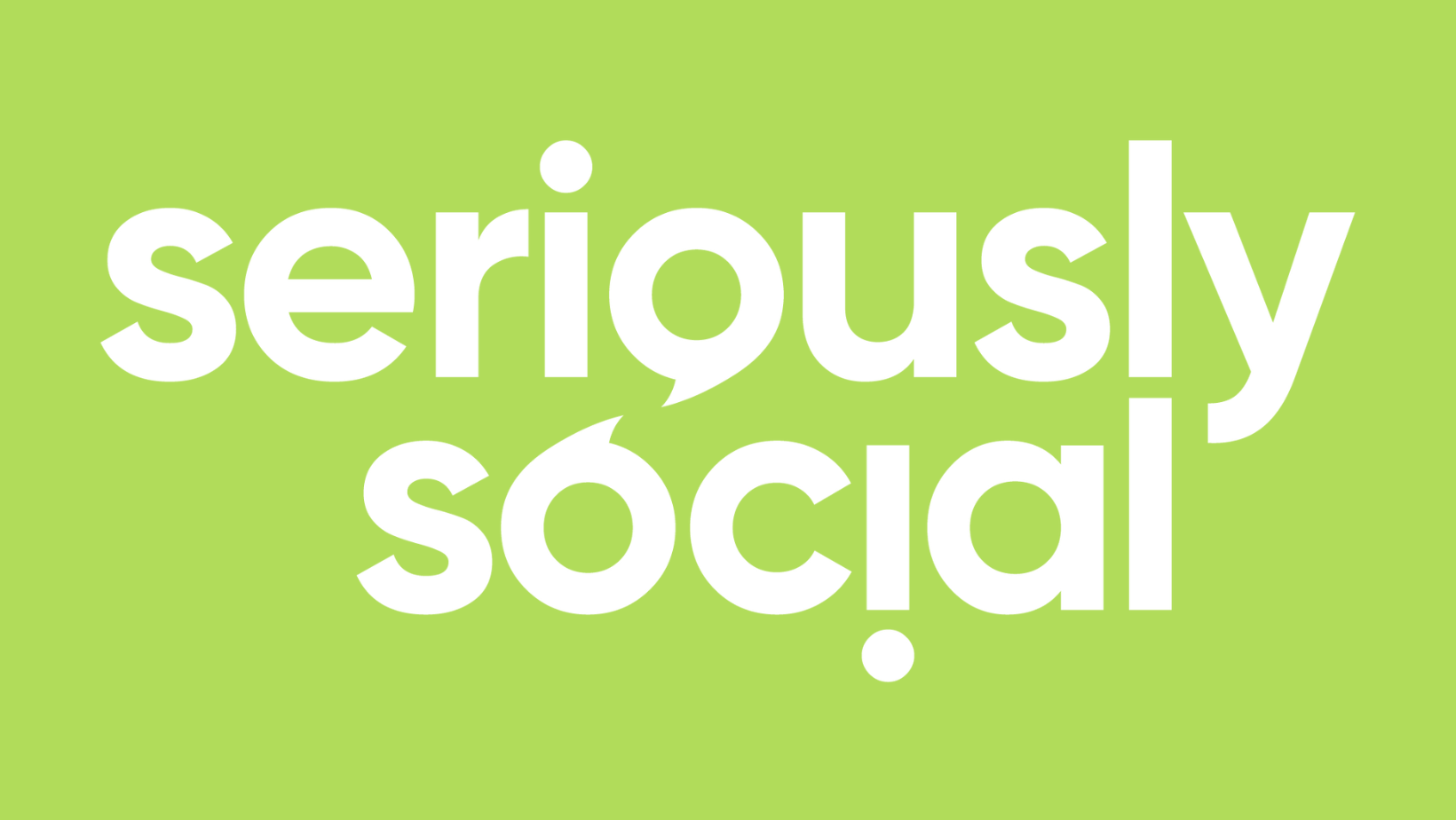Episode Notes
In science fiction films and books, Artificial Intelligence (or A-I) is usually either depicted as a menace to society or the saviour of the human race. Which is it?
In this episode of the Seriously Social podcast, journalist Ginger Gorman speaks to Professor Anthony Elliott, an expert on the way humans interact with technology. With fresh eye Anthony unpicks our issues with the Australian Government’s COVIDSafe app, and reveals the unprecedented ways in which A-I–usually so invisible to most of us–is helping us fight the deadly coronavirus on a global scale.
Transcript
[Start of recorded material]
Ginger Gorman: Good day. You are listening to Seriously Social. This is the podcast where we use the lens of the social sciences to help us consider how COVID-19 is impacting Australian society, our relationships, human connections and societal structures. We get experts from the social sciences to delve into all those nagging pandemic questions, whether it’s aspects of your own life that you’re wondering about or perhaps queries about the wider community.
And may I just take a little moment here to say that myself and the rest of the Seriously Social team are so thrilled and humbled at the community response so far. Thank you for downloading and listening and sharing our pod with your friends and on your social media channels. Now, let’s get back to the show.
With me now is Professor Anthony Elliott. He’s Executive Director of the Jean Monnet Centre of Excellence at the University of South Australia and he’s author of a book called The Culture of AI: Everyday Life and the Digital Revolution. One more thing. Anthony is also a Fellow of the Academy of Social Sciences in Australia.
Thank you so much for joining me.
Professor Anthony Elliott: Good. Thanks very much for having me, Ginger.
Ginger: Before we get right down into the deep stuff, I thought it was quite quirky that I sent you the instructions to record the podcast from home. And obviously, they’re cobbled-together instructions. We’re using Zoom on my computer. We’re using a digital recorder at my end and we’re using an iPhone at your end. What did you think was interesting about that, Anthony?
Professor Anthony Elliott: Well, apart from the fact it’s remarkably helpful to someone like me because, when I say someone like me, I write about the digital revolution, but as my kids often point out to me, I’m actually not very good at the digital revolution. I’m forever trying to start technologies and somehow manage to often get it wrong. But the way you actually just went through some of the different apps and devices and things that were implicated in producing the show, it’s interesting because we often think of all of these new technologies around us as being new.
And of course, in our wireless world, a lot of them are, but it’s interesting that from a broader sociological point of view, our wireless world only works to the extent that our pre-wired world actually underpins and supports it. So, there are lots of cables and wires and plugins sitting around me here, even though I’m holding a wireless device. And I guess, like everyone else, I spend a lot of my time always looking for somewhere to plug in to recharge.
Ginger: But isn’t it interesting, as humans, we are always trying to use technologies in new ways, which we’re always trying to innovate them and make technologies bend around our lives.
Professor Anthony Elliott: Yeah, we are. And obviously, we’re living at a stunning time of technological change. The digital revolution, arguably back from the time that the satellites were put up above the world in the late-1960s, once you had the possibility of near instantaneous communication, I would argue you got a whole new ball game.
You’ve got the unleashing of a world now of artificial intelligence, advanced robotics accelerating automation, big data, 3D printing, the Internet of Things and on and on, which essentially, I think sociologically means that the world will never be the same again.
Ginger: I’m interested to hear your insights in terms of your expertise and how you reflect on the pandemic. And one of the things that you’ve been thinking about is the Federal Government’s COVIDSafe app. Now, obviously, this has had a huge amount of media and it’s an app that’s designed to track and trace the virus. What are we missing in this discussion, Anthony?
Professor Anthony Elliott: You’re absolutely right COVIDSafe has been an absolute talking point in Australia’s attempt to come to grips with COVID-19. And I think some of the debate has quite rightly focused on the kind of criticism about the amount of data that’s actually being held by the Federal Government. So, those privacy concerns are really important to many people.
At the same time, we’ve seen that over 4.5 million people at this point have already downloaded the app in the first days of its release. So, I guess the jury’s out on exactly how this is going to impact the way we traverse COVID-19. I think it’s important thought to bear in mind that Australia’s not alone in this. You’ve got to take a comparative point of view. So, we know for instance that Singapore have a very similar app where they’re using Bluetooth technologies to be able to track and trace when people have been in close proximity with others over a period of time.
But further afield, like the app that’s used in China, that’s obviously much more strict or draconian some people would say in that, firstly, it’s mandatory. It’s tied to your social identification number there. And above all, what’s interesting there is that it actually governs where you can go. So, it’s using QR code scanners and that actually determines if you get a green light, then you’re clear to go. If you get an amber light, you need to isolate, a red light, they’re coming to get you, etc. So, the China situation is different.
And the other one I’d throw in, because we haven’t heard too much about this in Australia is what’s actually happening in Europe. The European Commission has been playing a very important role, particularly around those kind of advocating for privacy safeguards that a lot of Australians are concerned about, but they’ve been developing there what they call a bit of a mouthful, the Pan‑European Privacy-Preserving Proximity Tracing app. That’s a good one, isn’t it? The acronym is PEPP-PT. But what’s interesting there is they’re kind of looking ahead because that would be an app that would allow EU citizens to travel between EU countries effortlessly and easily.
Ginger: But why are you so interested in looking at our Australian app as part of a group of apps rather than individually?
Professor Anthony Elliott: Well, I’ve been especially interested in that because I think it tells us something about the nature of global pandemics and above all, it’s telling us something about how the very definition of what a global pandemic is, as it’s lived on the ground by you and me and others trying to react to and cope with it has actually fundamentally changed. What I mean by that is in the early-21st Century world that we live in today, we live in societies that are information rich. They’re high reflexivity societies.
So, with these apps, for instance, we have got real time information circulating about what it is that we’re doing. And we’re also getting information about how these apps are working and how they’re tracking and tracing others in real time in these other countries. That is not incidental information to how we react to and cope with the virus. It actually starts to impact and reorganize the way we live our everyday lives.
So, I would argue that in a very fast-paced information-rich society, like Australia today, how we’re reacting to COVID-19 is really very, very different to how the world reacted to the Spanish flu, for example.
Ginger: That’s what I was about to bring up with you. In the first episode of Seriously Social, I talked to Historian Frank Bongiorno about how many similarities there are historically with the way that Australia dealt with the Spanish flu pandemic of 1918 to 1919 and this current pandemic. But you have a very different perspective on this.
Professor Anthony Elliott: Yeah, I do because essentially with societies of low reflexivity, information moves much more slowly. So, therefore, the ways in which you can adapt to, react to and cope with the challenges that are before you, they tend to parcel out much more slowly and you get changes in behaviour over time and space at a slower kind of ratio. What’s happening today is we’re seeing things move very quickly.
You know how we keep hearing that the virus is moving very, very swiftly? Media keeps saying, “You know, it’s very fast-paced and it’s moving so rapidly. The situation is so fluid.” Well, yes, it is, but it’s not just the virus. We too are moving very rapidly, very quickly and we’re developing all sorts of remarkably creative responses to this very threatening virus.
Ginger: How do new technologies make a difference to how we’re dealing with this then?
Professor Anthony Elliott: If you look at something like artificial intelligence. So, we hear a lot today about how AI impacts our everyday lives. We’ve got lots of basic examples. Every time you look at Amazon and you get another predictive suggestion as to what book or product you may wish to purchase or when you click on for an order on Uber, AI is always at work in these kind of complex processes that underpin our lives, whether we know it or not.
But AI is actually also playing a really interesting role helping scientists try to get to grips with COVID-19. One really interesting example is the emergence of this COVID-19 High Performance Computing Consortium that’s emerged recently. That’s a consortium involving the likes of IBM, Amazon, Google, Microsoft and NASA and they’re all sharing their resources, particularly their computational resources based on AI.
For example, the world’s most powerful supercomputer, Summit, has been made available to scientists. And it’s really fascinating because there, they started off with billions of molecules where they were trying to identify what might be potentially a gamechanger in addressing COVID-19 and the scientists were crunching down these billions of molecules down to hundreds of millions, down to millions. And the work that was done over the course of just one week equalled the equivalent of what used to take scientists six months’ labour.
So, there’s a really interesting sense of just when you talk about the speed up of social life today, we’re also seeing the speed up in our response to COVID‑19.
Ginger: Just a random fact here. When we were chatting for this interview about what we wanted to cover and you started talking about Summit and a did a bit of Googling about Summit. And I read that it can do a quintillion of operations per second. And I’ve actually never heard of a quintillion. So, it’s actually so many operations every second that it kind of blows the top of your mind.
Professor Anthony Elliott: Yeah, it sure does. And when you put these supercomputing systems together as this High Performance Computing Consortium has done, when you put together IBM, Amazon, Microsoft, Google and all the rest of them, you’ve got operations like 400 quadrillion operations happening every second. It’s absolutely staggering. That said, I’m not suggesting that the technology in and of itself automatically gets us there. AI is part of a much broader social story happening here as to how communities and organizations are reacting to the crisis.
Ginger: I want to go to that point in a second, but is that unprecedented that these essentially rival companies are becoming unified in the face of this huge tragedy? The numbers that we’re seeing coming out of the US and the UK of deaths and of cases are just terrifying. Is this a kind of unprecedented reaction?
Professor Anthony Elliott: Well, it’s unprecedented, I would suggest certainly in terms of collaboration and cooperation. You’ve got forms of open cooperation that are starting to unfold now, the likes of which we haven’t seen before. And certainly, when you look at the opening up of supercomputer resources and cloud infrastructure capabilities and so many other, the technological infrastructure that is facilitating this scientific work, this is all I think heartening stuff. It’s very positive.
Ginger: But isn’t that interesting because I know you write a lot about the way that humans perceive AI. And there are so many varying reactions. Often times, AI is almost invisible. We don’t notice it because it’s happening around us in places that aren’t in front of our eyes. But there’s this is kind of push/pull that you’ve written about on The Conversation website and you talk about AI as being seen as either euphoric or cataclysmic. So, people see it in this very idealistic positive way or they see it in this really dark, menacing way. And that’s kind of like the reaction we’ve had to the COVIDSafe app. Where is the COVID-19 response sitting when it comes to AI?
Professor Anthony Elliott: You’re definitely right. AI is largely invisible. It’s general purpose technology. It’s like electricity. No one’s ever actually clapped eyes on a smart algorithm. It’s not something you do. It’s a bit like God or globalisation. We feel it through its impacts rather than ever directly see it. Therefore, the popular imagination infused by lots of those Hollywood movies is always at work and quite rife.
So, you’ve either got this sense of AI sweeping down to save us all and the scientists or the technologists, the new technological solution will be the way out, whether it’s climate change or COVID-19. Or you’ve got these kind of dark, menacing, looming threats, us descending into a kind of Orwellian 1984. You can see, to go back to COVIDSafe, lots of that’s at work there.
And I find it interesting because it’s not as if any of this debate has just fallen down or parachuted in onto us and that it’s completely new. We’ve had lots of this happening for quite a long time now. We know that predictive AI targets consumers in terms of their shopping preferences and social networks. You’ve got obviously Twitter and Facebook bots, governments are using AI to nudge citizens towards certain social policies.
And there’s also been a really disturbing dimension to a lot of predictive AI with governments in Asia and especially in India and China creating these AI labs to monitor online social media, this kind of ongoing surveillance as to how we live our lives, and our lives in these times.
So, I think both forces are at work in the imaginings of everyday women and men. And that’s another thing that social science can help us try to sort out here, the goods and the bads, the pros and the cons.
Ginger: I have seen a lot of commentators say in response to this concern about the COVIDSafe app, “What are you so worried about? We’re being tracked all the time. Your running app tracks you. The social media companies track you. There’s so much tracking going on anyway. And this tracking is for health reasons. It’s for the public good.” So, yes, it’s been interesting watching that conversation.
Your colleague, Professor Richard Holden, actually waved away the safety concerns about the app when he was talking to me. And he suggested that people who didn’t download the app were selfish. How would you respond to that view?
Professor Anthony Elliott: Well, COVIDSafe is a digital technology that is obviously engaged in observation, the monitoring, the tracking and the surveillance of our public and our private lives. Yes, for the purposes of health, but we know why people are worried. People are worried that the information, which is very centralised in and through the Federal Government that this could be used for other purposes.
And we’ve got lots of examples, whether you think of social networking, Facebook and Snapchat and the others or of our mobile payments through PayPal and Apple Pay, the search engines of Google, Yahoo and others, of these technologies being turned not sort of giant surveillance machines in a way. So, I can see why people are worried.
Shoshana Zuboff, in her book of the decade arguably, The Age of Surveillance Capitalism, makes this argument that one of the reasons all of this stuff is so worrying is not that surveillance is not new, but the way that AI is taking surveillance and turning it into a kind of prediction futures market where people, if you get hold of this data, it’s very lucrative. It’s worth massive amounts of money because people are willing to lay bets on what our future behaviour is going to be in terms of the marketplace.
So, I think there’s a good reason to be worried. On the other hand, you’ve got to assess this against the backdrop of what the threat is and the threat is certainly very menacing and very disturbing.
Ginger: It is. I mean, it’s terrifying looking at the news coverage in other countries around Italy, Spain, UK, US. And actually, we’re very lucky to be sitting here in Australia where so far, the pandemic has been really well managed. What other instances or examples can you point to where AI is being used to help us through the pandemic?
Professor Anthony Elliott: Another good example, I supposed, would be drones or UAVs, unmanned aerial vehicles, in which AI has played a really critical role there. And we’re seeing some interesting instances of that, UAVs, drones had already been used over the last few years, particularly related to healthcare operations, especially in undeveloped countries getting critical supplies to areas of the world where it’s not always easy to gain access because of military conflicts and wars. The UK Government, for instance, has been using drones or started using drones to get PPE equipment from the English mainland over to staff working on the Isle of Wight. So, I think that’s a good example.
Back here in Australia, there have been some quite novel instances of drones used to try to tackle coronavirus. Where I work at the University of South Australia, we’re already trying to develop a new drone that can basically monitor the temperature and the respiratory rates of citizens as it’s flying around, picking up all these images of people sneezing and coughing in crowds. And we’re working currently at the moment, the University is working with a company in North American, in Canada, to try to operationalise this.
But so too are universities across the globe using these new AI technologies to develop, I think, quite stunning forms of innovation, which all go back to this earlier point I made that these are very information-rich, highly-reflexive innovations, which actually, they’re not just technological innovations, they’re also social changes because they alter the definition and the experience of what a pandemic is.
Ginger: Thank you so much for talking to me.
Professor Anthony Elliott: Ginger, it’s been a real pleasure. Thanks.
Ginger: Thanks again for listening to Seriously Social. If you like what you are hearing, don’t forget to share our podcast with your friends and on your social channels and rate us wherever you get your podcast from.




